Michael Nash takes the new Seat Leon out for a ride and provides an insight into its design features
Seat has never been in a stronger position. The company has consistently smashed its sales records over the past few years, owing in part to an extensive broadening of its portfolio with the Arona, Ateca and Tarraco. These three SUVs accounted for a whopping 44% of Seat sales in 2019.
But Seat’s best-seller remains the Leon – a functional little hatchback whose rivals include the Golf, made by sister company VW. With the fourth generation Leon, which was launched back in January, Seat hopes that its new exterior and interior design is highly appealing.
We spent a week in the new Leon FR to get a feel for the new design details.
Exterior
At first glance, the new model certainly looks like a Leon. It seems to follow the same rules as the third generation model with a familiar shape and character. This is probably due to both being based on VW Group’s MQB platform.
However, the latest Leon is both longer and more narrow. Overall length has been increased by 86mm and overall width has been reduced by 16mm. There are also more grooves and sharp lines on the bodywork, providing a distinctively sporty feel in comparison to the previous Leon.
The bonnet is clearly flatter and longer, and there is a clear gap between it and the headlamps and grille. The grille is larger and has six edges as opposed to five. This enhances the relationship between the grille and the lighting, with the latter sloping inwards to bring the eye to the grille.
The lamps sit back in the bodywork and extend to finish above over the front wheel arches. They include the same lighting signature as the previous Leon, although the triangular shape is acute instead of open.

There are two creases in the bodywork running along the sides, and while they are faint, they do add shape. The rear windows push back into an opaque triangle shape that emphasises the slope of the roof.
A small spoiler extends the roof to hang slightly over the rear end, and there are two other clear lines running across the back to create a triple-tiered effect. This makes it look as if the back end juts out when viewing the Leon from the side.
The lighting strip that spans the width of the rear and connects the two lamps emphasises the middle lip of the tier. The line beneath that is more subtle, and sits above an indented section for the numberplate. There are two exhaust pipes positioned at either side of the rear bumper on the FR model, but they are fake.
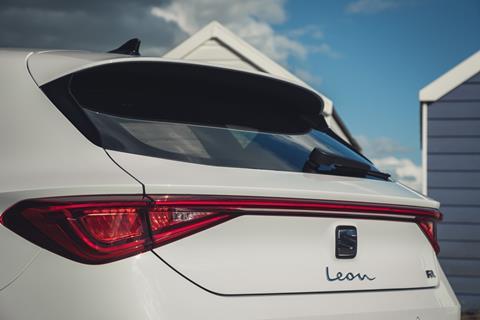
Interior
The increased size of the Leon also means that passengers benefit from having more space. There is 49mm of extra legroom in the rear and slightly more headroom in the front row, though the additional space is too subtle to really notice.
What is noticeable is the minimal feel of the cabin. Seat has done away with most of the buttons and switches that cluttered the previous generation Leon, opting instead to integrate almost all the functions in the 10-inch touchscreen (available on the FR variant we tested, while lower priced variants get a smaller screen) and the 10.25-inch configurable driver instrument cluster.
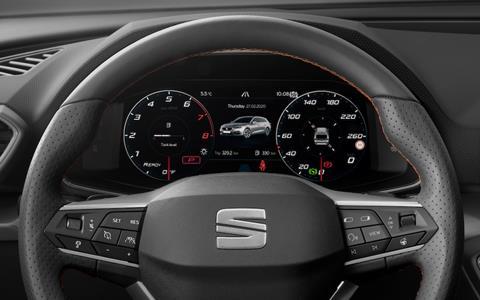
Temperature and volume is managed by a small strip of touch-sensitive black plastic that sits underneath the central screen. These don’t provide any haptic feedback, which initially makes it tricky to know how hard to press. The other audio and climate controls are hidden away on a menu in the touchscreen.
As almost everything is accessed by the screens, the system has clearly been designed to be simple and easy to use. It is well set-up, but if using touch is too much, a new voice recognition system is available.
In terms of materials, most surfaces are covered by hard black plastic, with some sections like the middle tier of the dash and the housing of the air vents finished in chrome. The leather seats are comfortable and, on the trim we tested, come with red stitching to match the steering wheel.

Seat has provided a nice touch with a wrap-around light strip embedded in the top of the dashboard, which continues on the doors. It provides both decoration and functionality, such as blind spot detection. This combination of the aesthetic and functional is an extremely important frontier for designers, but one that is yet to bear much evidence through current models on the market.
Driving and UX
There are many different engine and gearbox options to choose from. We had a 1.5-litre petrol direct-injection turbocharged petrol engine with a six-speed manual, but there are 1.0-litre and 2.0-litre petrols available, as well as a 2.0-litre diesel. It is also the first Leon to be available with a 48-volt mild-hybrid system, and there is a plug-in hybrid option too.
The 1.5-litre engine is responsive at both low and high speeds, making it easy to overtake on motorways or quiet A roads. It is also surprisingly chipper, delivering a decent punch when the right foot is down. Shifting gears is made smooth and aided by a light clutch, and there is a fair amount of sound deadening to ensure road, wind and engine noise are all reduced.

The steering is light and the turning circle is smaller than the Golf and the Audi A3, making the new Leon easy to manoeuvre in tight spots. The ride remains stable even on bumpy rodes thanks to a well-tuned suspension. Although the FR variant we tested comes with a stiffer suspension, it still makes light of potholes and rough surfaces.
One of the most interesting pieces of tech in the new Leon is the predictive adaptive cruise control (ACC). This gathers data from the built-in sat nav and the front-mounted camera to automatically change the speed of the vehicle depending on the road ahead. Factors that may influence it include junctions, roundabouts and even bends in the road. This is particularly helpful when the speed limit changes and isn’t adequately signposted.
While it is there to help out, Seat has tried to ensure that the ACC system is not relied upon too heavily. Sensors track the driver. At least one hand must be on the steering wheel, and if both are off for more than 15 seconds, audible and visual warnings are given before the car automatically brakes.
Summary
The Leon has been a vitally important car for Seat since it first hit the market in 1999, and although the company now has a mix of SUVs on offer, the latest iteration of the hatchback is well designed and engineered so it should appeal to a large customer base. Its sharp exterior image and minimalist interior makes the design feel modern, and while it may not be as lavish as some of its competitors, the new Leon works extremely well on many levels.































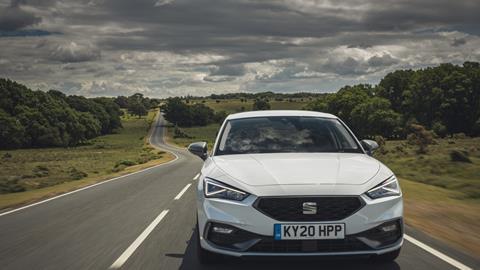
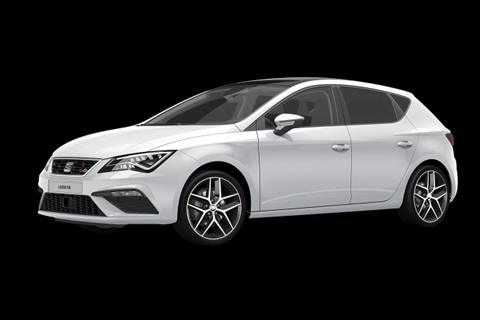
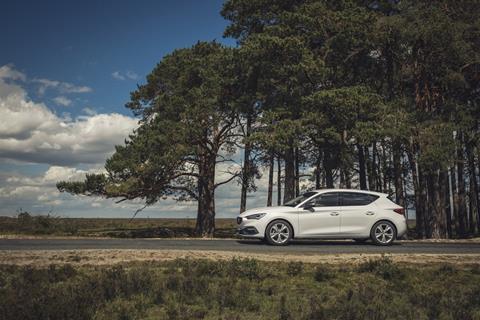

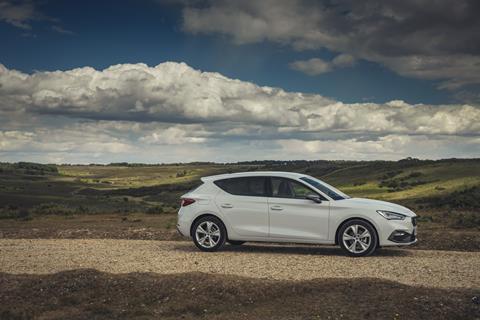

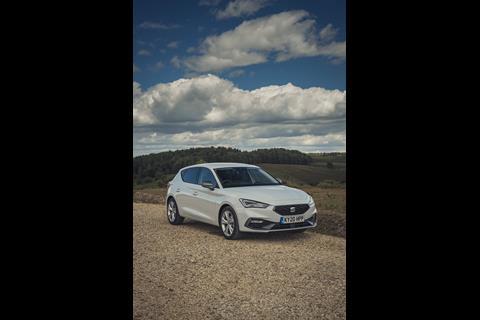
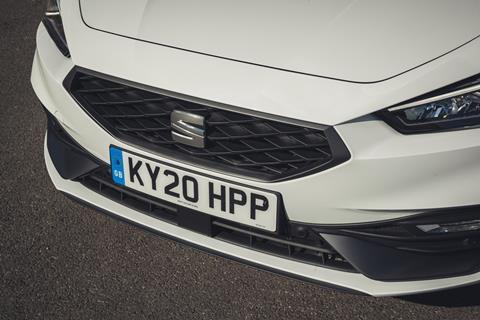
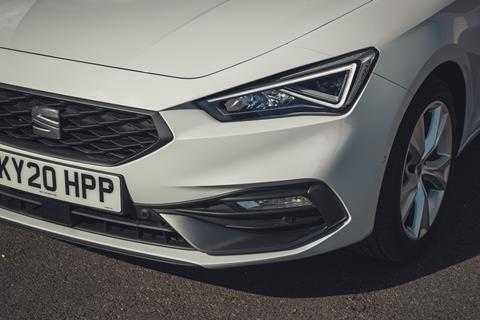


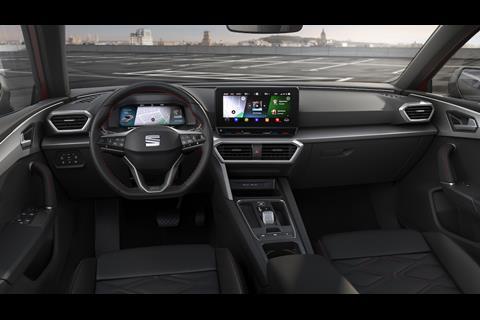


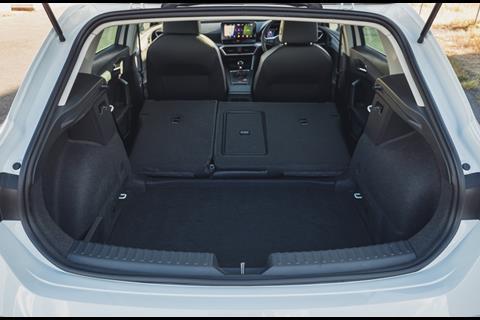
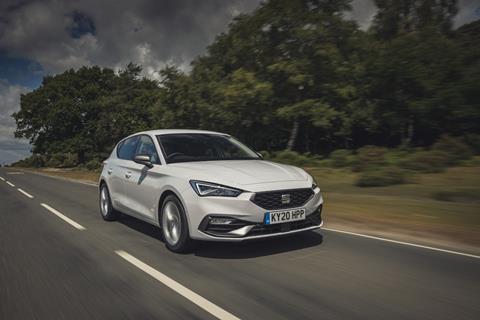




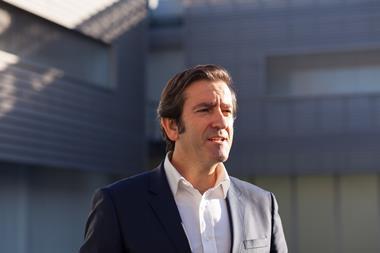
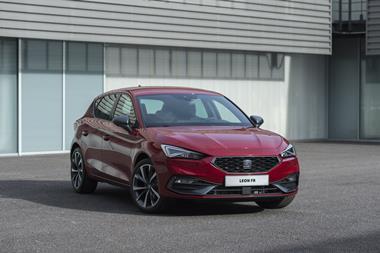



No comments yet